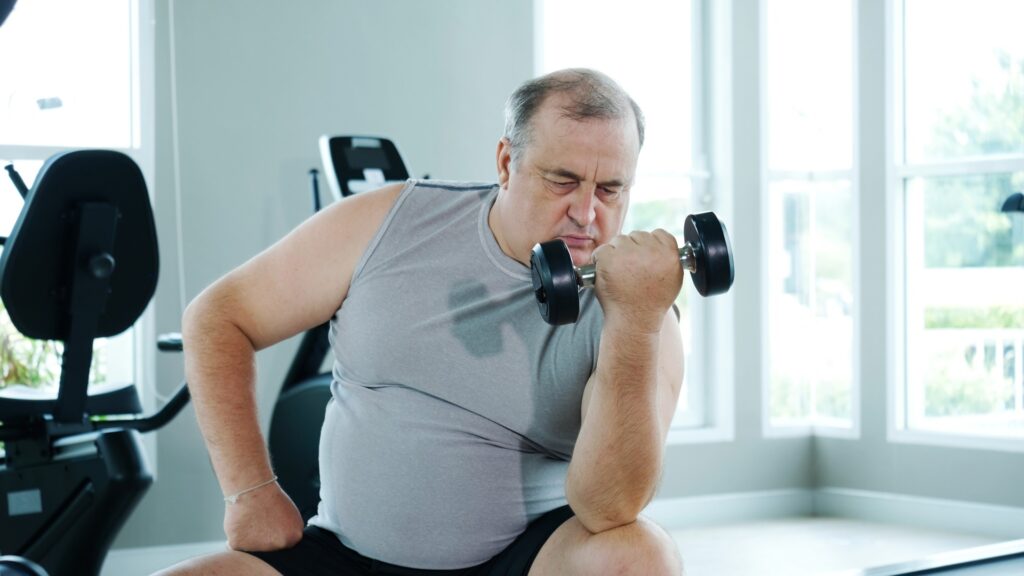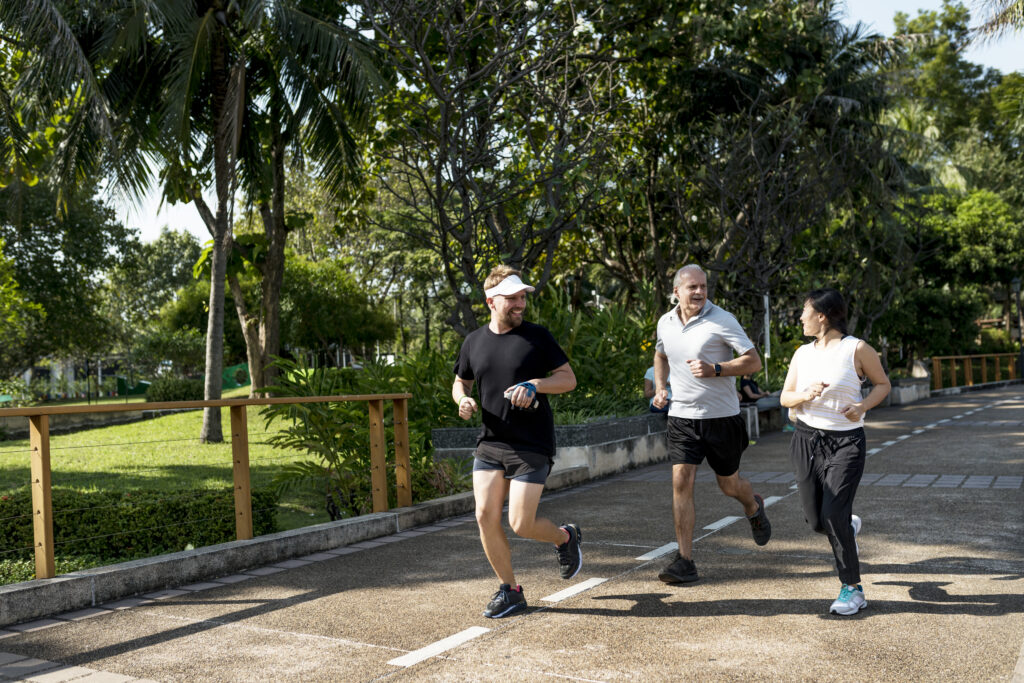Metabolic syndrome
Home / Metabolic syndrome

What is metabolic syndrome?
Metabolic syndrome occurs when a person has a combination or cluster of related cardiovascular and metabolic disease risk factors:
- Abnormal levels of blood fats (high ‘bad fats’ or low ‘good cholesterol’)
- Raised blood sugar levels
- Elevated blood pressure
- Central obesity
Metabolic syndrome may be diagnosed if you have at least 3 or 5 of these risk factors in combination. It can contribute to the risk of heart (cardiovascular) disease and other conditions like type 2 diabetes.
How does exercise help with metabolic syndrome?
Regular exercise can:
- Decrease blood triglyceride levels (‘bad fats’) and modestly increase HDL-cholesterol (‘good cholesterol’)
- Improve blood sugar levels
- Lower blood pressure
- Reduce body weight and waist circumference.
Exercise can significantly reduce the risk of progression to type 2 diabetes in adults who have metabolic syndrome. Although the combination of weight loss and exercise usually produces superior outcomes and should be encouraged, weight loss is often mistakenly considered the main reason for doing regular exercise. Evidence shows that the improvement in metabolic syndrome abnormalities can be achieved without weight loss. This is relevant to your care given that weight loss from most available therapies is usually modest and difficult to sustain in the long-term.
Things to remember
If you have any questions as to whether, or what type of exercise is right for you, you should seek guidance from your medical practitioner and a referral to an accredited exercise professional.
These professionals can conduct appropriate screening to determine what type of exercise will be both safe and beneficial for you, and can tailor a program to suit your goals, preferences and exercise abilities. This is particularly important if you are starting a new exercise program, or significantly changing your current exercise program.
Health insurance and medicare
Visits to these allied health professionals may be covered by your private health insurance and Medicare (under a chronic disease management plan which can be developed by your General Practitioner)

What type of exercise is best for metabolic syndrome?
Aerobic exercise
Aerobic exercise such as brisk walking, cycling, swimming, jogging, dancing and team sports is beneficial for the management of metabolic syndrome and also improves the health of your heart, blood vessels and your cardiorespiratory fitness.
Resistance training
Resistance exercise (such as weight lifting, body weight exercises, resistance band exercises and circuit training) can improve some metabolic syndrome abnormalities (although probably not abdominal fat levels) and also help to promote healthy muscles and bones. Undertaking a combination of regular aerobic exercise and progressive resistance training can reduce the risk of progressing to type 2 diabetes.
Frequently asked questions
What is an Accredited Exercise Physiologist (AEP)?
An Accredited Exercise Physiologist (AEP) is an allied health professional that prescribes individualised exercise therapy to help people manage their chronic conditions, disabilities, long-term injuries and so much more. They are the most qualified professionals in Australia when it comes to the prescription safe and effective of exercise therapy.
Who should see an AEP?
Anyone who wants to move safely and improve their health can benefit. From chronic conditions to injury recovery, or simply wanting advice on how to exercise right, an exercise physiologist is the expert to see.
Is an AEP covered by Medicare or private health insurance?
Yes. As allied health professionals, exercise physiology services are recognised in government health funding including Medicare, National Disability Insurance Scheme (NDIS) and Department of Veteran’s Affairs (DVA), workers’ compensation and private health insurers. It’s important that you check with your provider as coverage can vary.
Where can I find an AEP?
Use recognised directories like Exercise & Sports Science Australia (ESSA), ask your GP or look for allied health clinics with AEP credentials.
You may also like

How long does it actually take to see results from exercise?
Whether you want to build muscle or increase aerobic endurance, everyone is looking for RESULTS. If you’re curious about how your body responds to exercise (and how long it takes to see changes), Accredited Exercise Physiologist, Harry Beresford, dives into this topic below. Just remember that to get results, you need to do ‘regular physical […]

How to exercise right for metabolic syndrome
Metabolic syndrome is a group of disorders that affects between 20 – 30% of Australian adults. It greatly increases your chance of suffering a heart attack or stroke, or developing type 2 diabetes. So, is exercise safe for people with metabolic syndrome? And what types of exercise are best? Let’s take a look… What is […]

